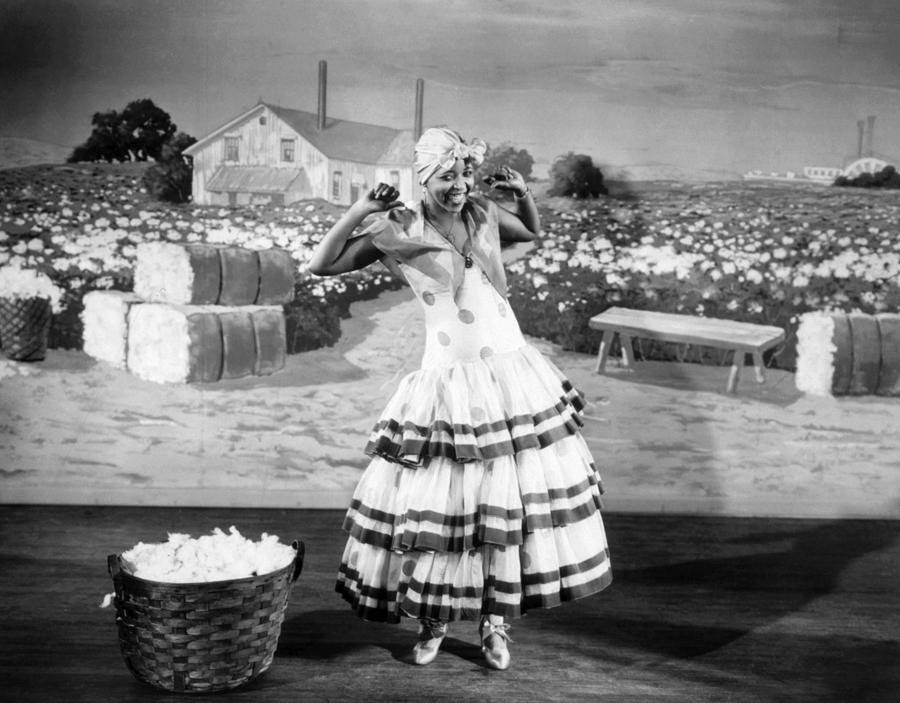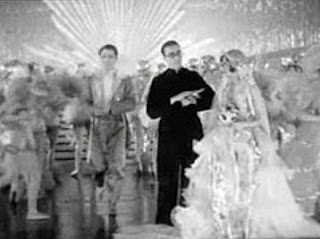This was one of those posts that COULD have been among my best, if only. If only technology had allowed it.
For years I've been trying to find a decent-quality YouTube video of an extremely hokey number from Broadway Melody, often called the "first movie musical". Made in 1929, it was one of the first talkies, so nobody even knew how to record a conversation, let alone musical theatre. Everyone was still shouting into microphones hidden behind potted palms.
But that didn't stop producers from trying to cash in on the craze for "all singing! All dancing!" (All the time.) They went ahead, and for some reason pulled together some of the most mediocre performers who ever hit the stage.
My favorite number from this very strange cinematic artifact is called Wedding of the Painted Doll. Strange, because the choreography is a nightmare, and the dance performances awkward and amateurish. Who knows? Maybe only the sound mattered at this point, which was a man singing inane lyrics about - you guessed it - the wedding of the painted doll, in an annoying high tenor voice.
So I finally find a decent video of the picture part of this thing - they seem to appear, then disappear as they're taken down due to copyright restrictions, then pop up again. I couldn't make the kind of gifs I wanted because the THREE different programs I use to make gifs were all catawampus, or just not able to process the video. So I ended up with two sets of gifs from two different YouTube videos. One was extremely yellow, and cropped very badly for some reason, but much clearer in picture. The other one was framed right, but grainy and slow-mo. I had to use something called Facegarage (note the ugly watermark), which explains the rough edges of some of these.
This is interesting because the dancer in the middle "cheats" when she drops to a kneeling position: she puts her hand down to steady herself. Her "split" is awkward in that her knee comes up before it straightens. Very rough, and my nine-year-old granddaughter's dance teacher would surely yell at her for this.
This is meant to be the "parson", and he does some neat balletic things in this, though a bit later on he fluffs a move. Why, I wonder, were there no re-takes in this? Was the budget that low, or - more likely - did this have to be rushed out to meet the rabid public demand for "all-singing, all-dancing" talkies?
Here comes the bride, clomping down the stairs oh-so-daintily. Maybe the sound distracted people from such gracelessness.
The parson, once so nimble, fluffs a handstand. His left arm is wobbly and his right hand shifts, so he abandons the move like an off-balance figure skater and cartwheels off the stage.
And here the dancers are flipped one by one, until two of them are lifted and twirled around so fast it's amazing they can still stand.
And so on! The original video (which I've posted at the top) starts with a cartoon, so don't be daunted. The actual number begins at about the one-minute mark.
When mentioning the title of this number, it kept coming out Wedding of the Pained Doll. No comment on that.







































